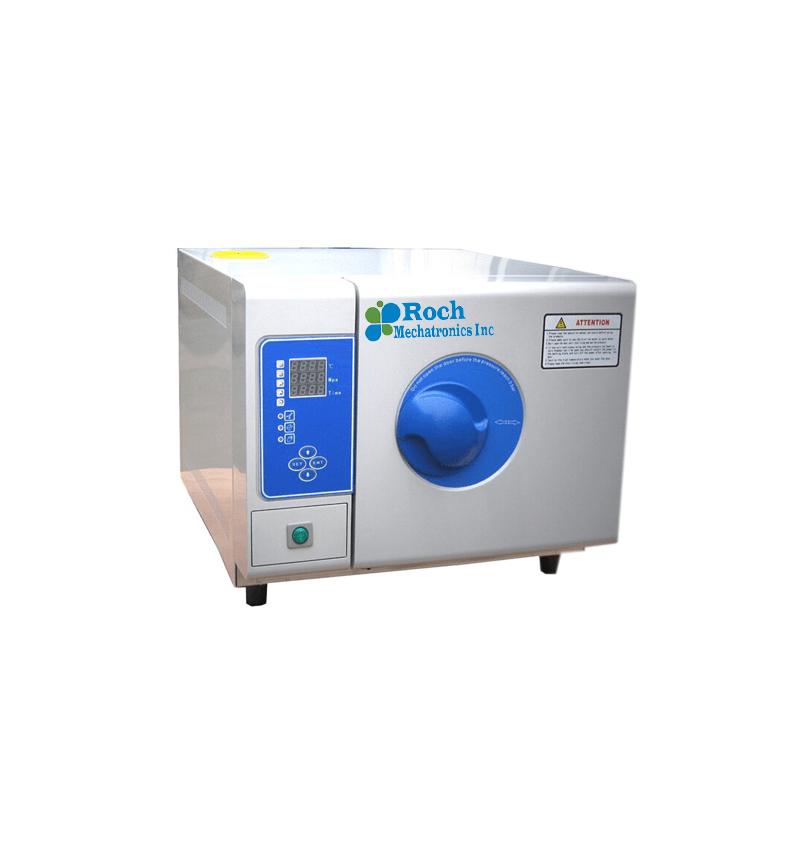Autoclave Sterilizer
Roch Mechatronics Inc. Bench-top steam sterilizers are an ideal solution for industrial, Pharma, Biotech, Medical Research, Hospital, and Diagnostic applications.
Automatic Temperature Control System to offer more stable and reliable sterilization service Electronic/Micro-Processor/PID/Digital Control of System All of the working programs are set up in a micro-process system. Just push the selection button
Frequently Asked Questions (FAQ)
An autoclave sterilizer is a device used in healthcare, laboratories, and other industries to sterilize equipment, materials, and instruments by subjecting them to high-pressure steam or heat. This process effectively kills bacteria, viruses, and other microorganisms, rendering items safe for use.
An autoclave sterilizer works by using steam under high pressure and elevated temperatures to kill microorganisms. The items to be sterilized are placed in a chamber, and steam is introduced. The pressure and temperature inside the chamber are carefully controlled to ensure efficient sterilization.
Autoclave sterilizers are versatile and can be used to sterilize a wide range of items, including surgical instruments, laboratory glassware, medical equipment, textiles, growth media, and waste materials.
Autoclave sterilization is highly effective and can eliminate most microorganisms, including bacteria, viruses, and fungi. However, some bacterial spores are more resistant and may require longer exposure to high heat or pressure for complete sterilization.
Yes, there are various types of autoclave sterilizers, including gravity autoclaves, pre-vacuum autoclaves, and steam flush pressure pulse (SFPP) autoclaves. These differ in the way air removal and steam penetration are managed.
Sterilization conditions, such as temperature, pressure, and duration, vary depending on the type of autoclave, the materials being sterilized, and the desired level of sterilization. Standard conditions include temperatures around 121°C (250°F) and pressures of approximately 15 psi.
Autoclaves use high temperatures and pressure, which may damage or deform heat-sensitive materials or instruments. It’s important to select the appropriate sterilization method and conditions for the items being sterilized.

